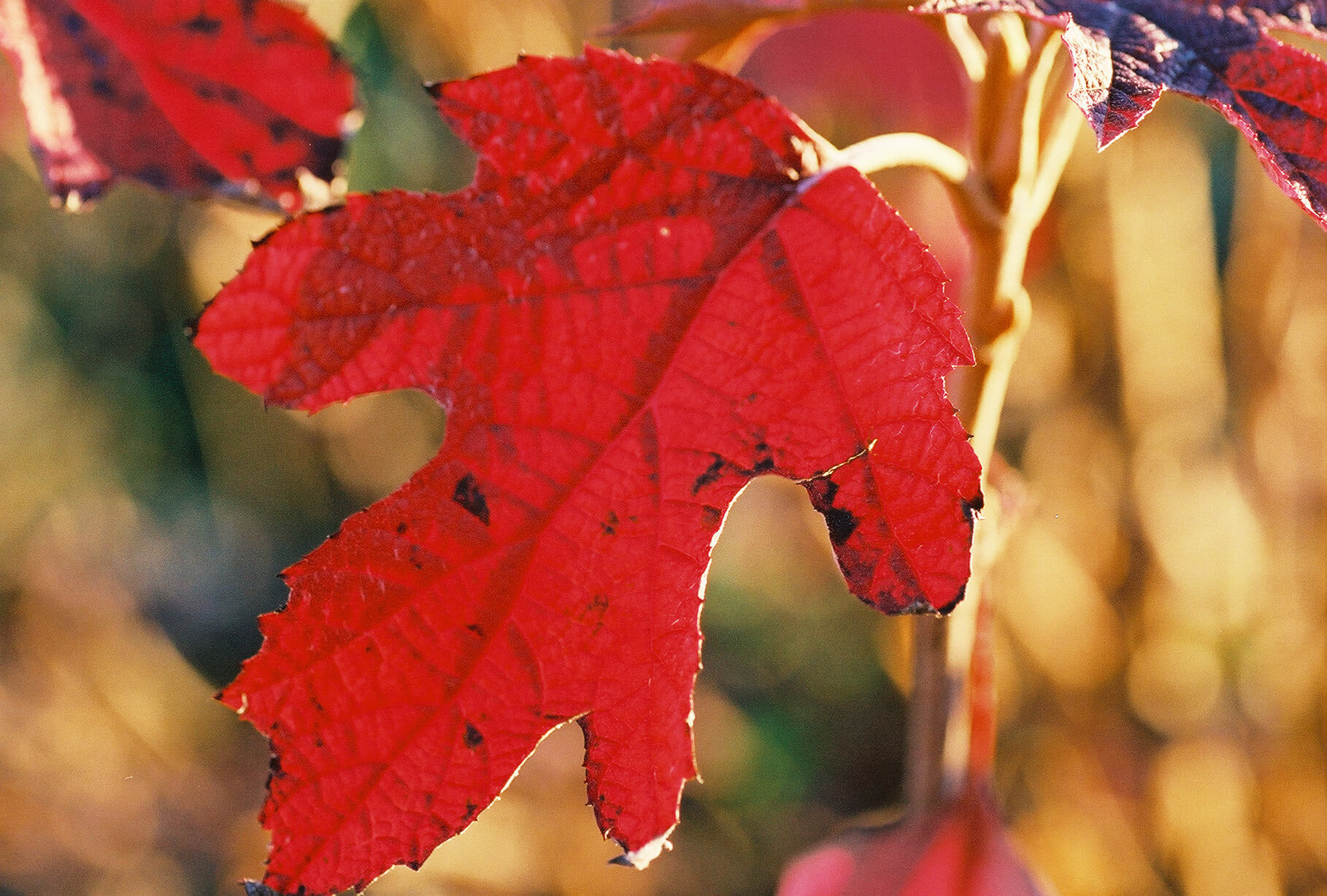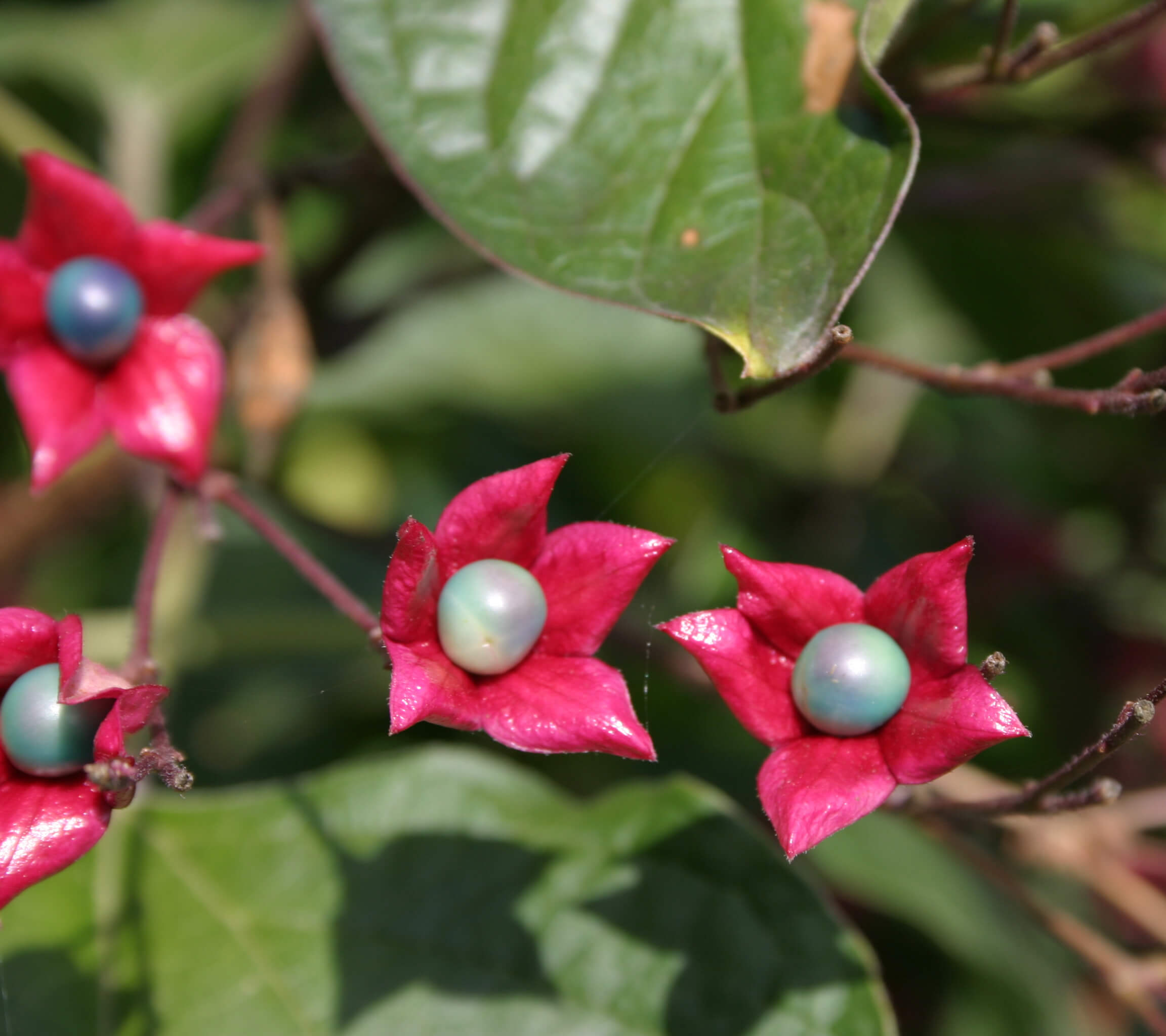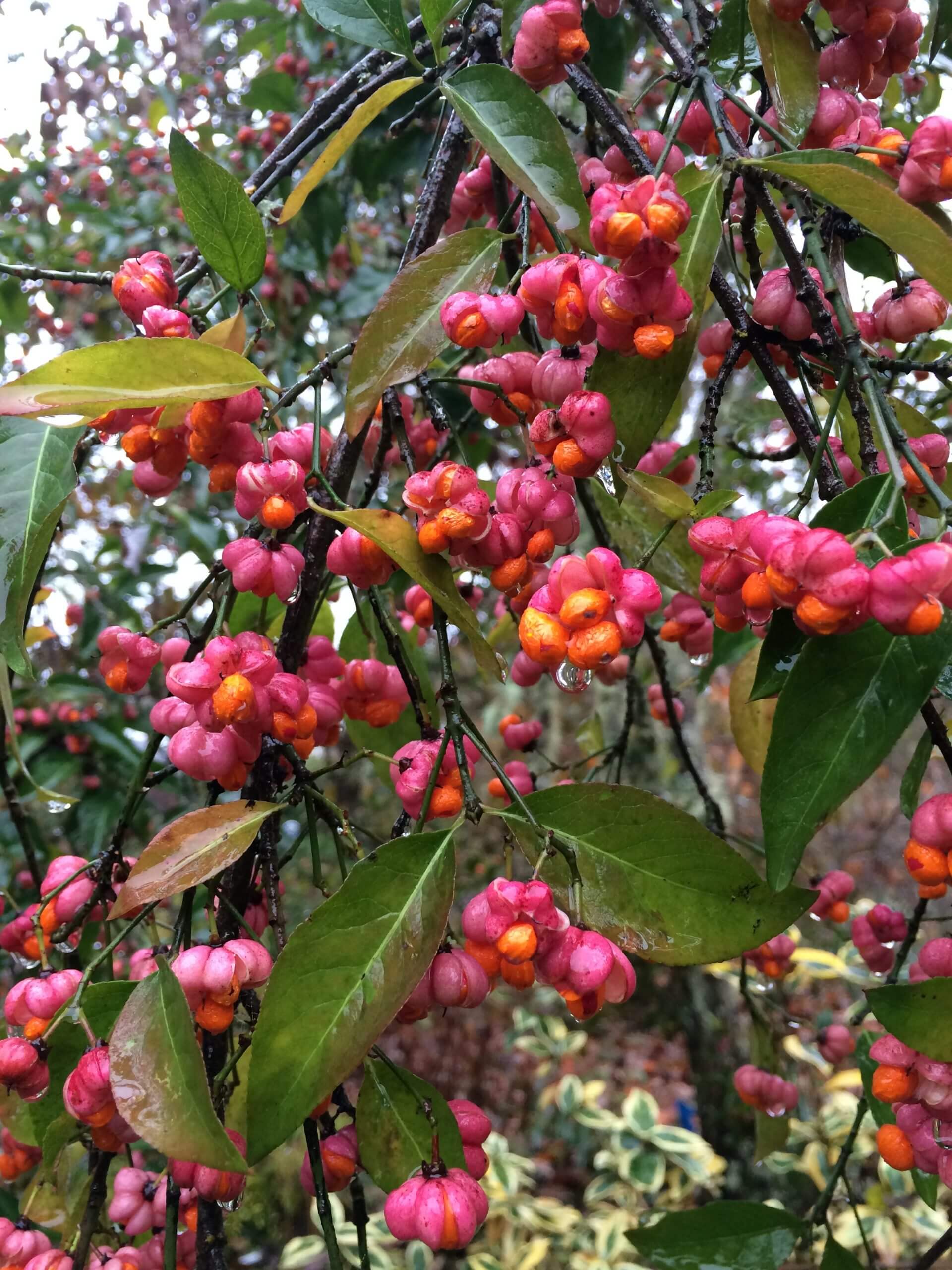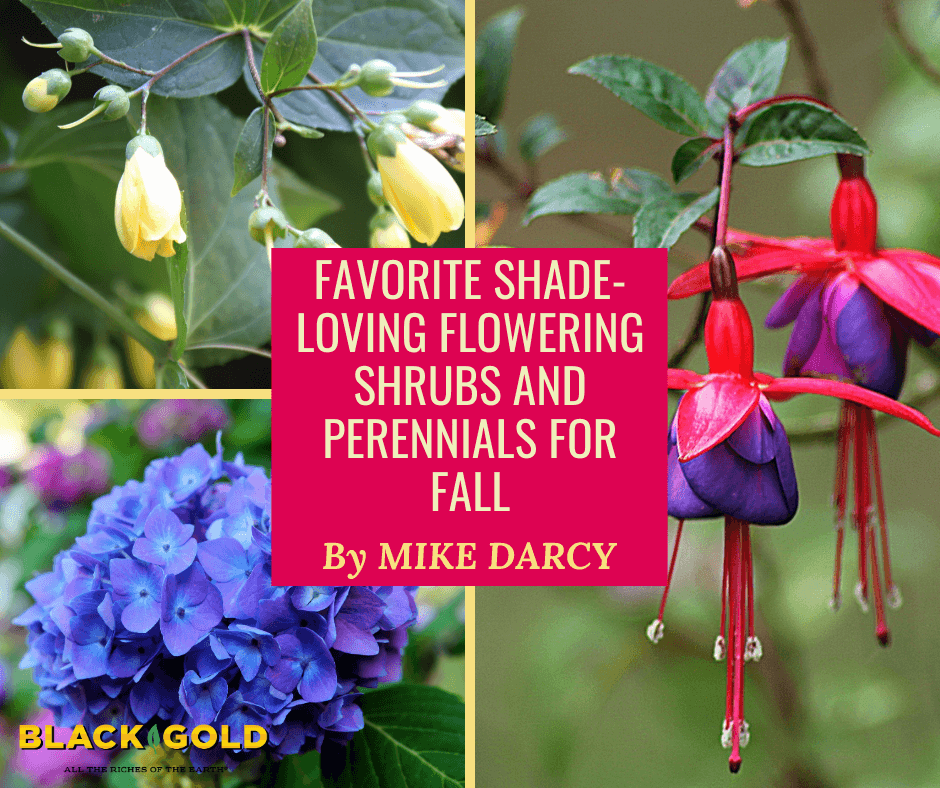
We’ve had a long hot and dry summer here in the Pacific Northwest, so those plants that relish the sun and take drought have performed beautifully. In turn, shade lovers, that thrive in cool, moist environments have needed extra care. In my garden, we have a mix of areas with blazing afternoon sun, almost total shade, and both sun and shade. I have banked on a large selection of shade plants to provide color in the form of foliage as well as flowers in my full and partially shady areas, and as summer wanes, I count on certain fall bloomers to keep my shade gardens looking sharp.
Reblooming Hydrangeas
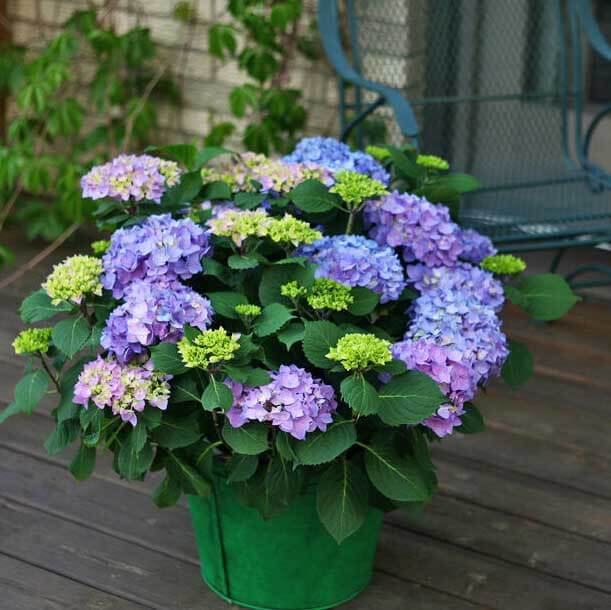
Reblooming hydrangeas are the first group of plants that come to mind for late-summer and fall color in the shade garden. While many will tolerant some sun, I think they look their best, and the flowers last much longer if the plants are grown in afternoon shade. Bigleaf hydrangea (Hydrangea macrophylla, Zones 6-9) and mountain hydrangea (Hydrangea serrata, Zones 5-9) are some of the best adapted to shade, and rebloomers flower the most reliably into fall. One excellent selection to try is the large-panicled Let’s Dance® Rhythmic Blue® reblooming hydrangea, which reaches 4 feet by 4 feet and produces big violet-blue (or pink in more alkaline soils) flower clusters well from midsummer to fall. Another is the very compact 3-foot Tuff Stuff Ah-Ha® reblooming mountain hydrangea with its lacy pale-blue flowers. It grows well in-ground or in well-drained containers filled with a quality mix, like Natural & Organic Black Gold Flower & Vegetable Soil.
Good water is essential. If the plants become stressed for moisture, often the flowers will turn crisp, especially when in the hot sun. Despite our tough summer, hydrangeas have thrived when given adequate moisture and some protection from the sun. When I walk around my neighborhood, I see gorgeous hydrangea flowers on those plants that have been given the right care. This is where a good mulch will also help keep the plants hydrated and happy. Black Gold Garden Compost Blend is an ideal water-holding soil amendment as well as mulch.
Fuchsias
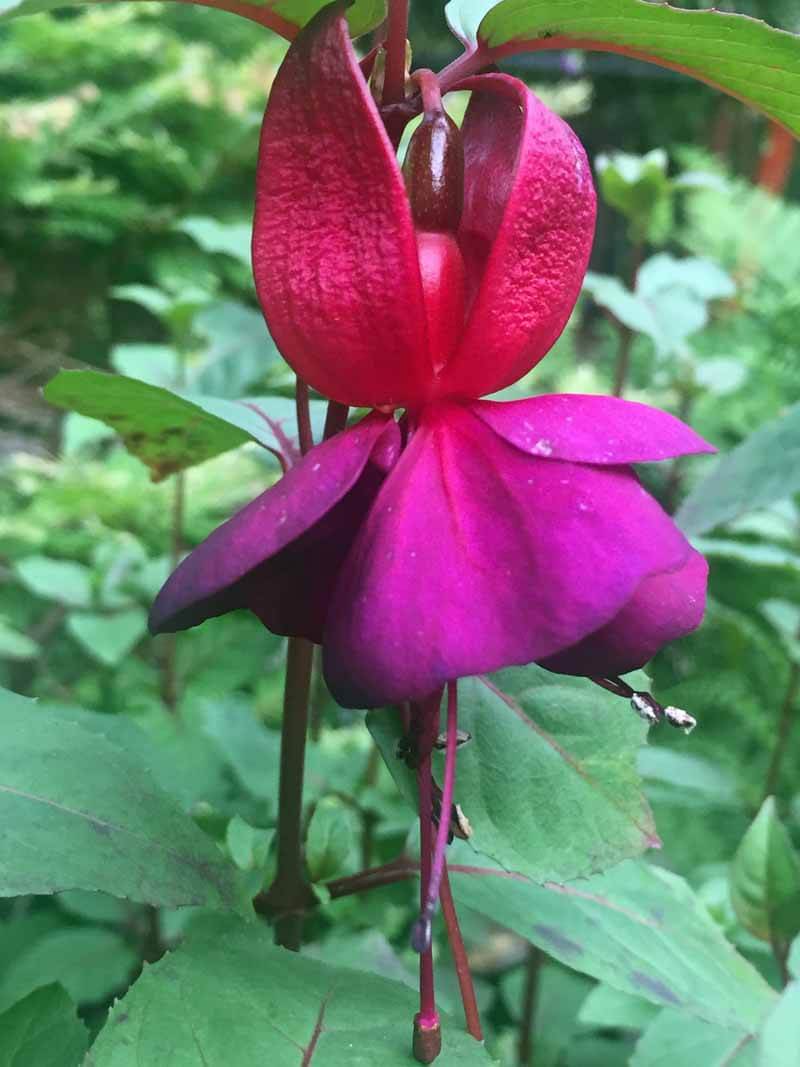
Another popular and well-known flower for partial shade is fuchsia (Fuchsia hybrids, Zones 9-11). ‘DebRon’s Smokey Blue‘, with its dark rose and purple flowers, is a personal favorite. Mine have been blooming all summer and will continue well into the fall. We have fuchsia plants in containers on our deck that are covered with flowers and have many buds yet to open. While the flowering will not be as prolific as it is now, they should continue to bloom until frost. Some fuchsias have the addition of colorful variegated foliage, so the plants can be colorful even without flowers. With their brightly colored flowers and foliage, fuchsias provide quite a show in the autumn shade garden.
Hardy fuchsia (Fuchsia magellanica, 6-10 feet, Zones 6-9) is an Argentinian shrub that blooms from summer to fall with many small, red and pink, pendulous flowers that feed migrating hummingbirds. While many of the hardy fuchsias will grow in the sun, I’ve found that they perform better without the hot afternoon summer sun. It is wise to place hardy fuchsia near the home or protective stone walls to provide it extra winter protection.
Palm-Leaf Begonia
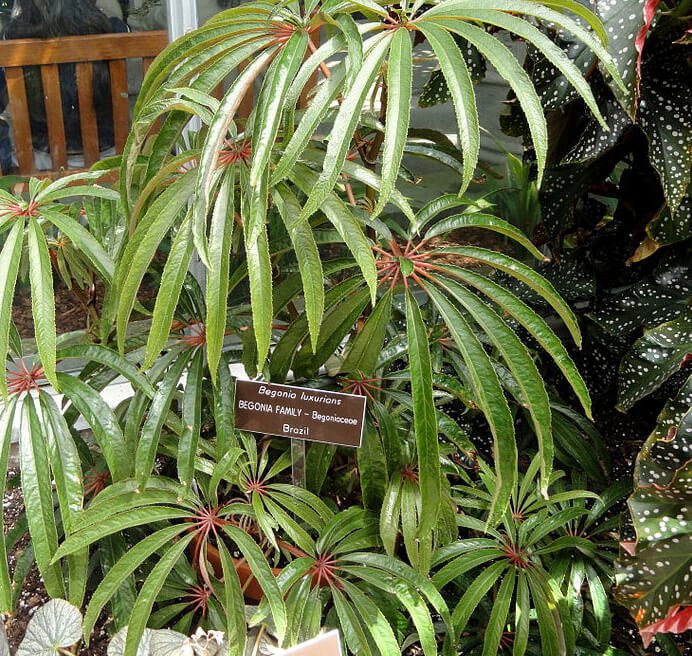
A new plant for me this year is palm leaf begonia (Begonia luxurians, Zones 9-11). The leaves are very tropical looking, and it has been in bloom during the past month with clusters of white and yellow flowers. I have my plant in a container with Black Gold Natural & Organic Potting Mix. It’s in an area where it only gets filtered sunlight because of overhead trees. It was about 12 inches tall when I bought it in early June and has now grown to 4 feet. Technically a perennial, it would be treated as a summer annual here or could be brought indoors as a house plant in a sunroom or greenhouse. It would not survive our winters outdoors.
Yellow Wax Bells
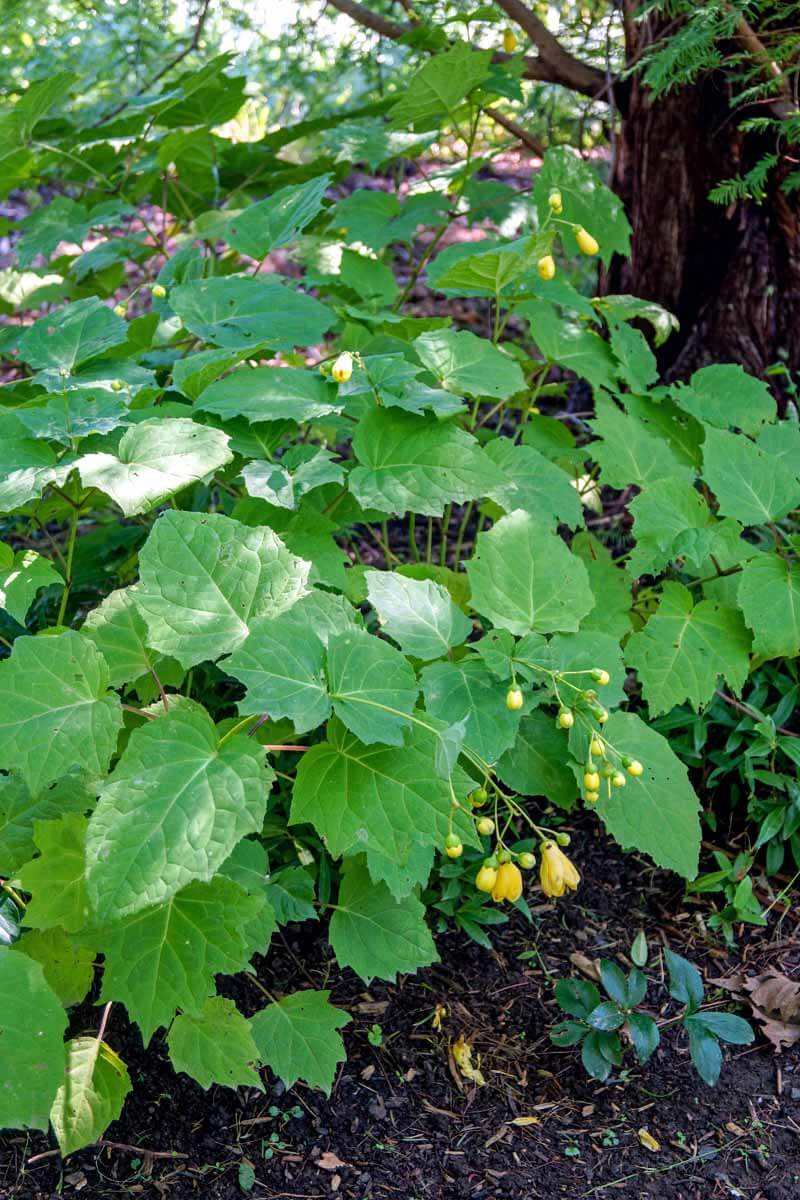
Yellow wax bells (Kirengeshoma palmata, Zones 5-8) is a perennial in the hydrangea family that is native to eastern Asia. It is quite a mouthful to say in Latin as well as to remember. While the common name, yellow wax bells, is much easier to remember and say, it is not well known and would be hard to find in most garden centers under that name. I rarely see it in local gardens, and I don’t know why. It grows beautifully for me. A plant was gifted to me many years ago. I have it in a shady location, and it thrives.
The plant itself is about 4 ft tall and wide and is coming into bloom now. Its waxy yellow flowers are very pretty and look attractive against its large, bold, palm-shaped leaves. It likes shade and moisture and is winter hardy. I mulch it regularly with Black Gold Garden Compost Blend.
This is just a sampling of plants that give late summer color to shaded gardens. To add to the list, I have written about fall anemones (click here to read), dahlias, some other favorite fall-flower picks (click here to read). Check out your local garden center, and you may be surprised at the large selection of blooming plants that are still available.


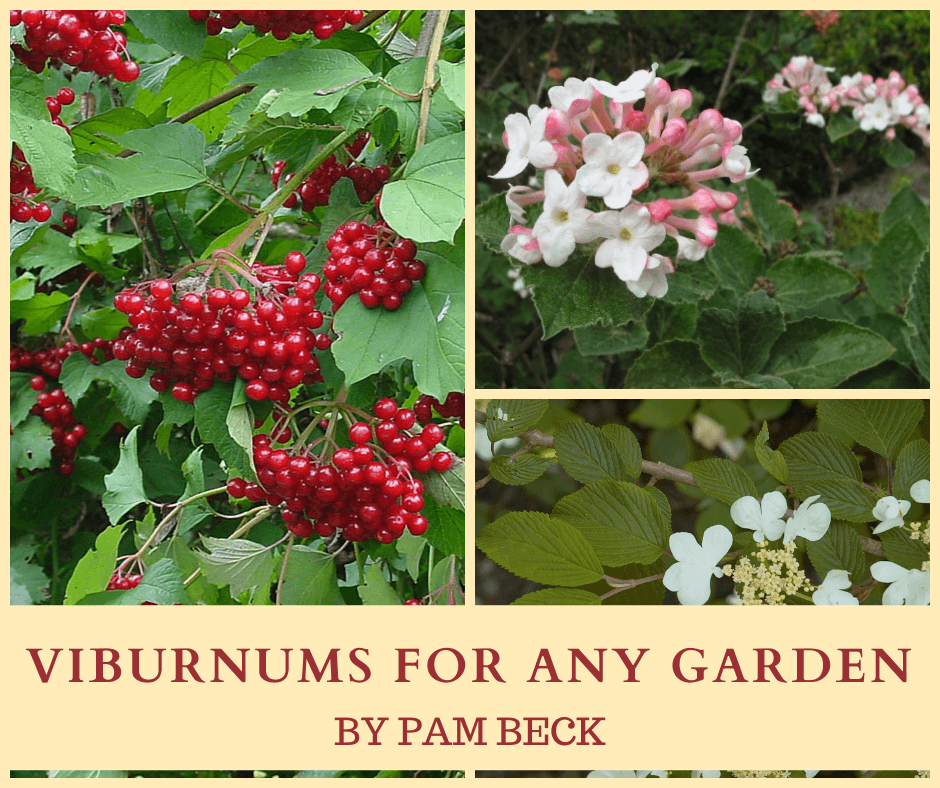

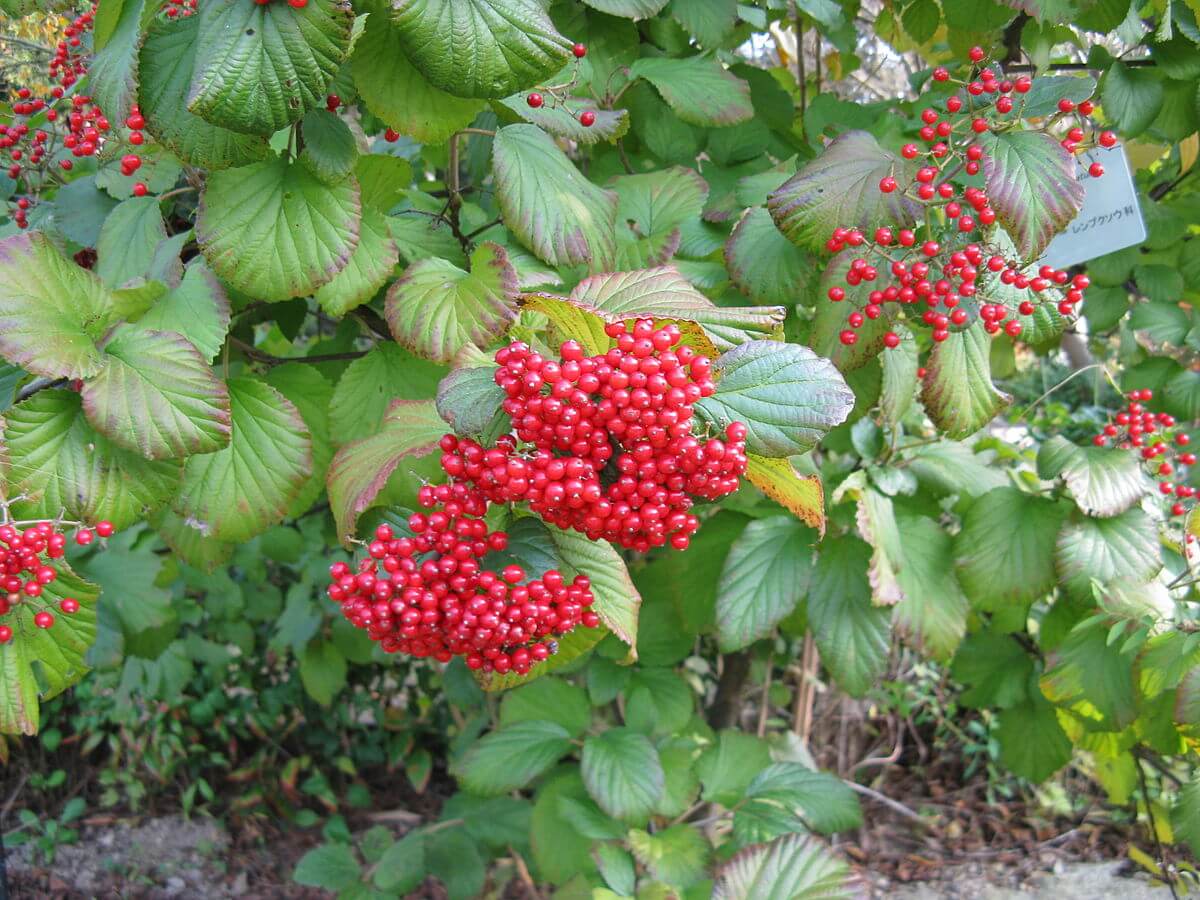


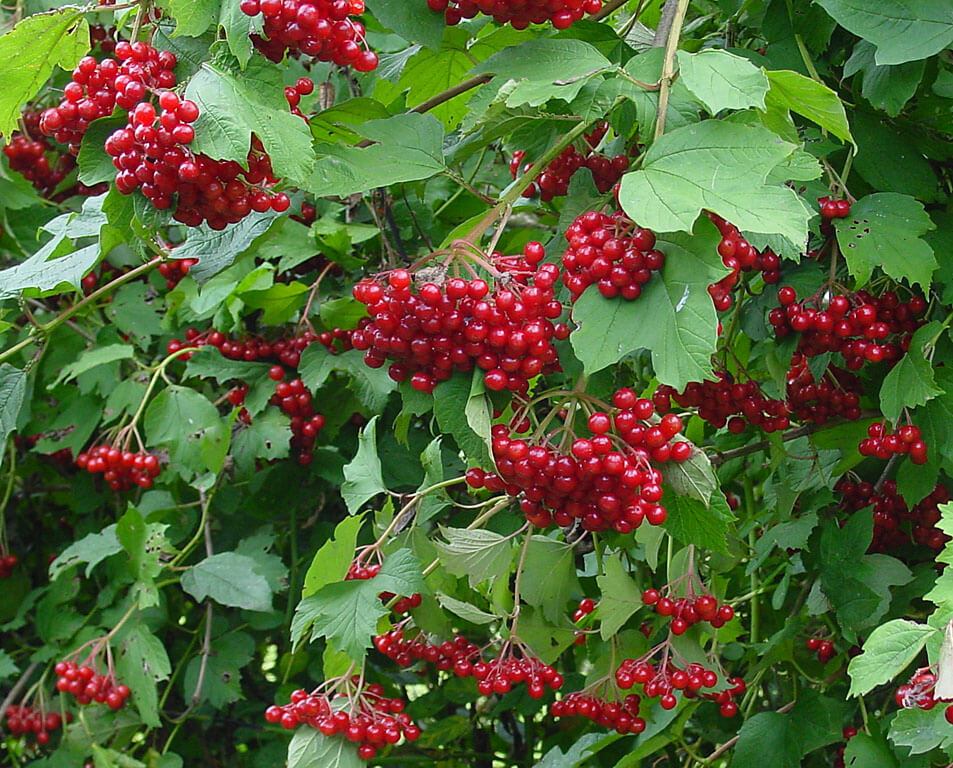
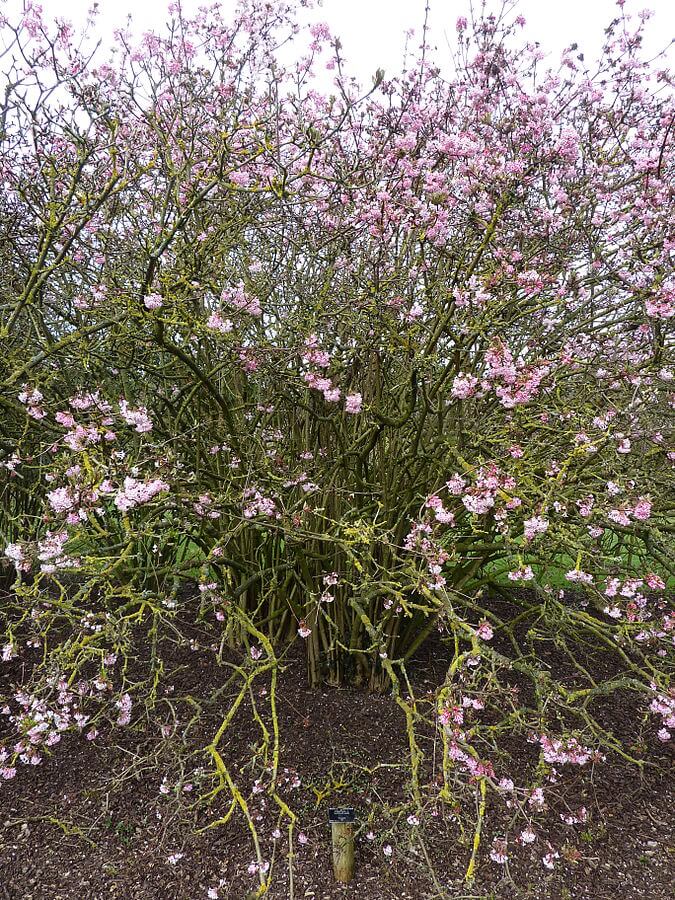

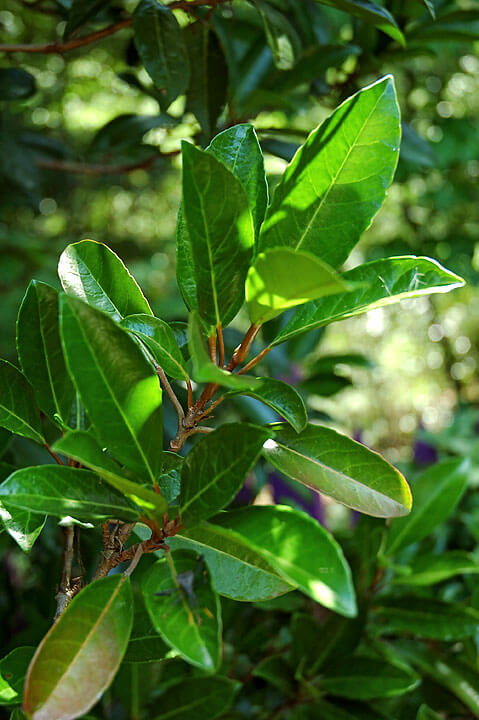
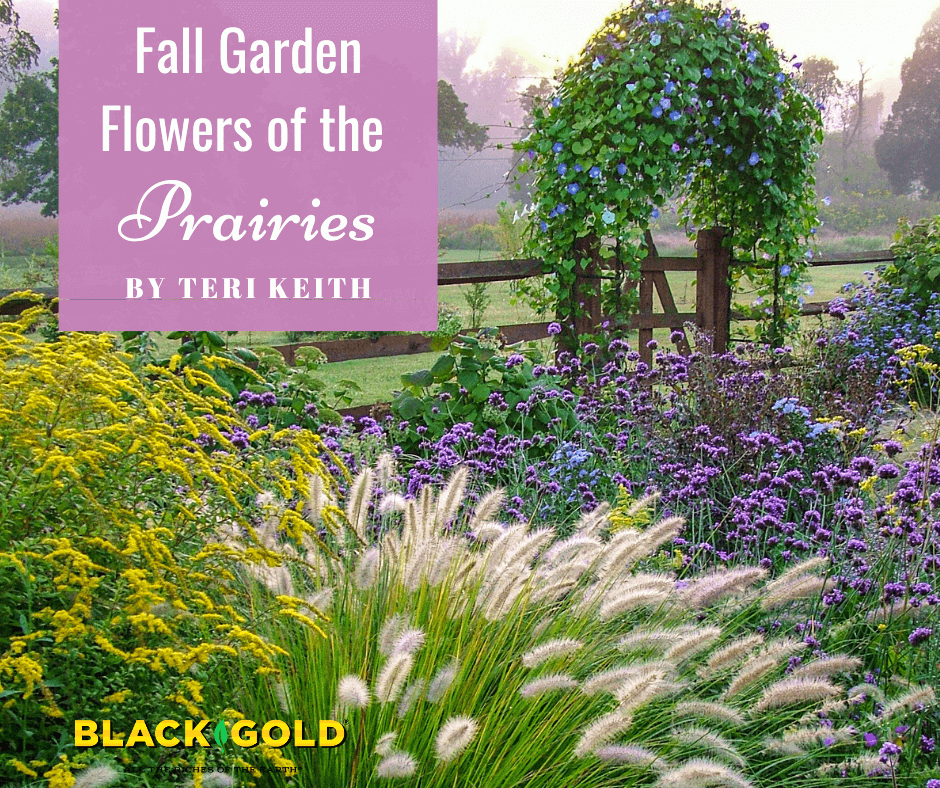



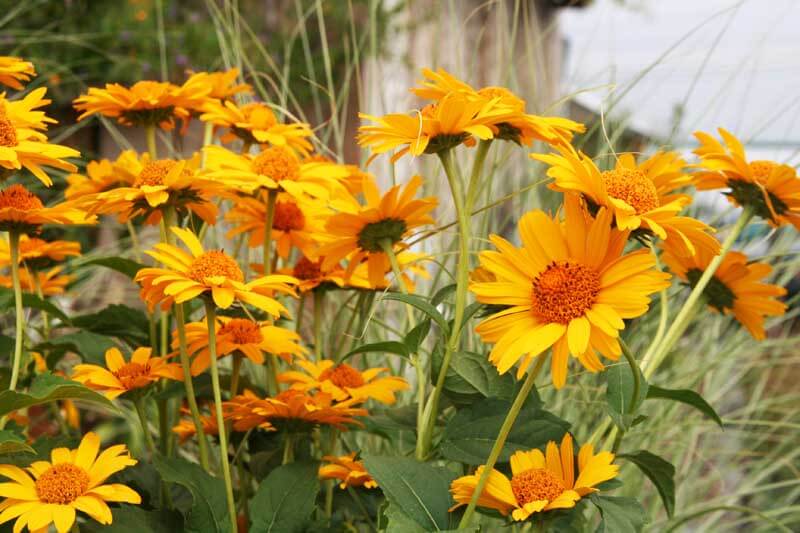
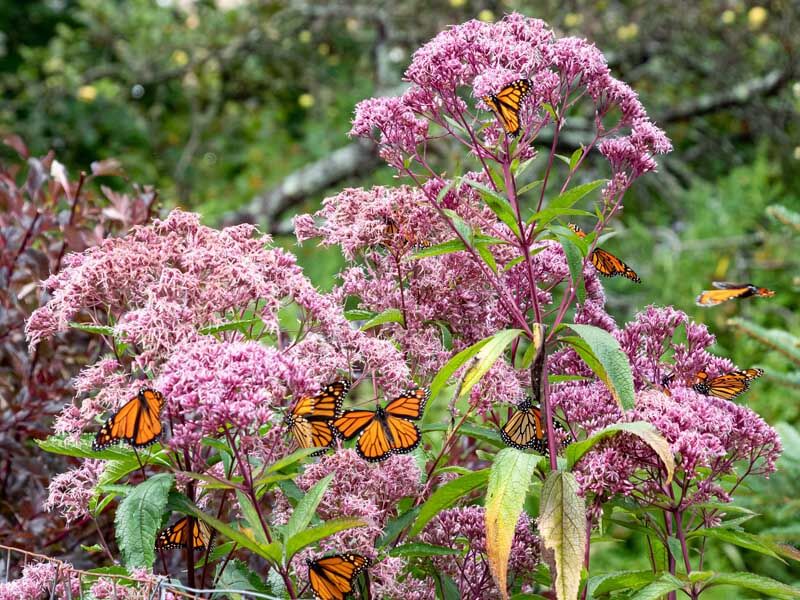
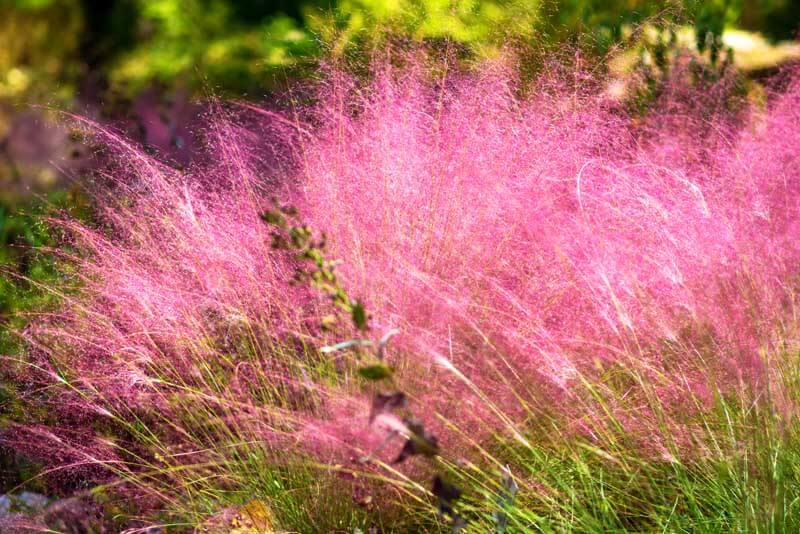
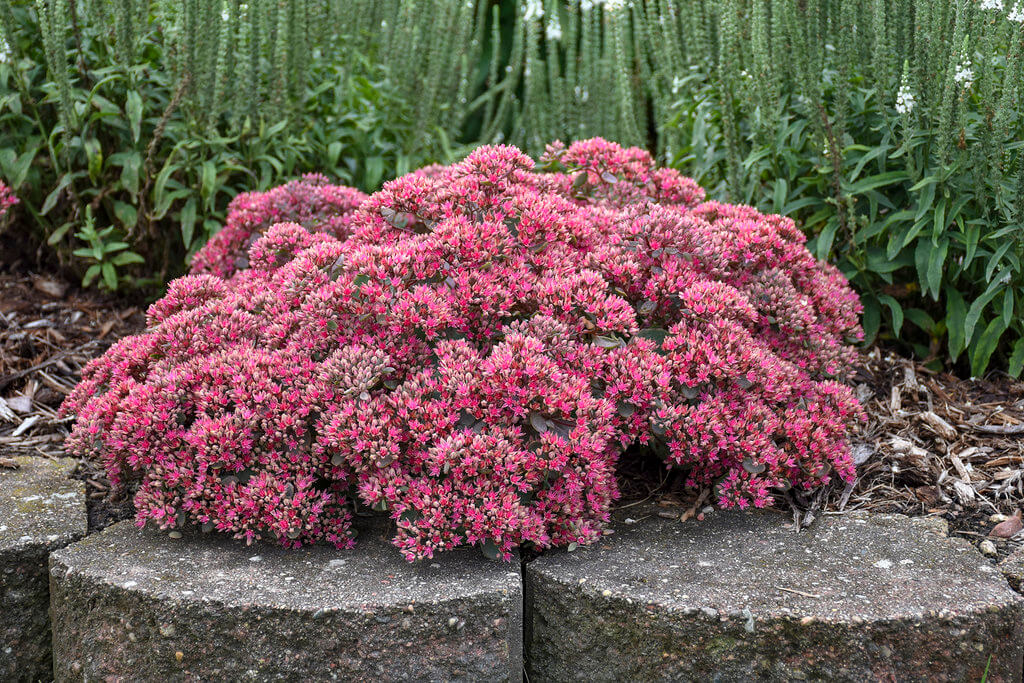
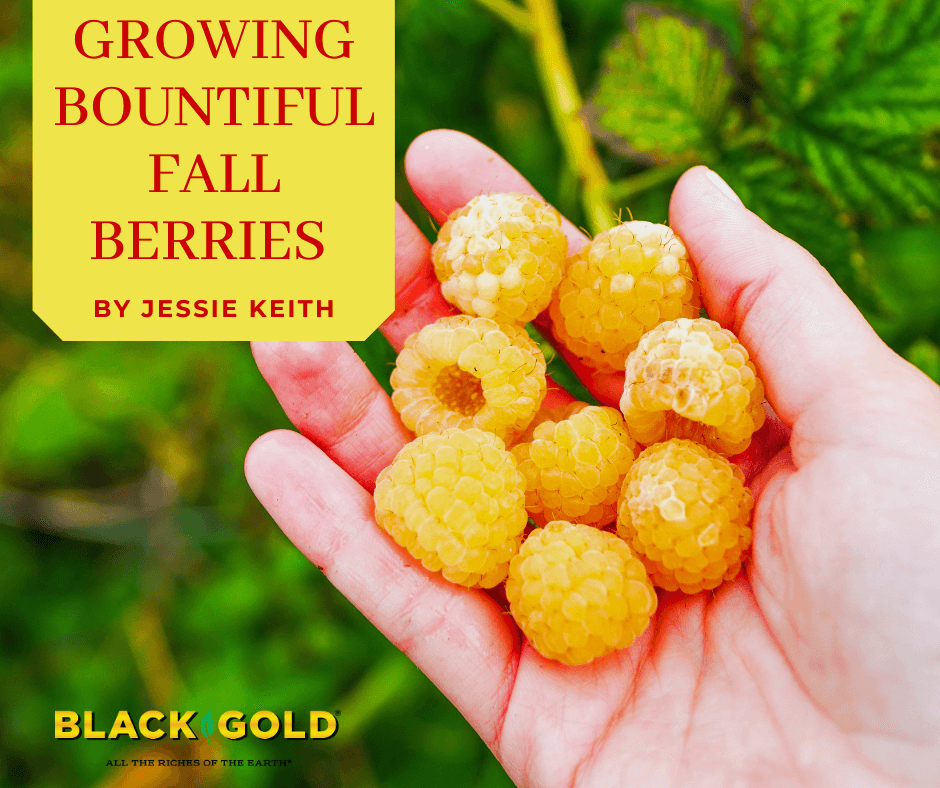
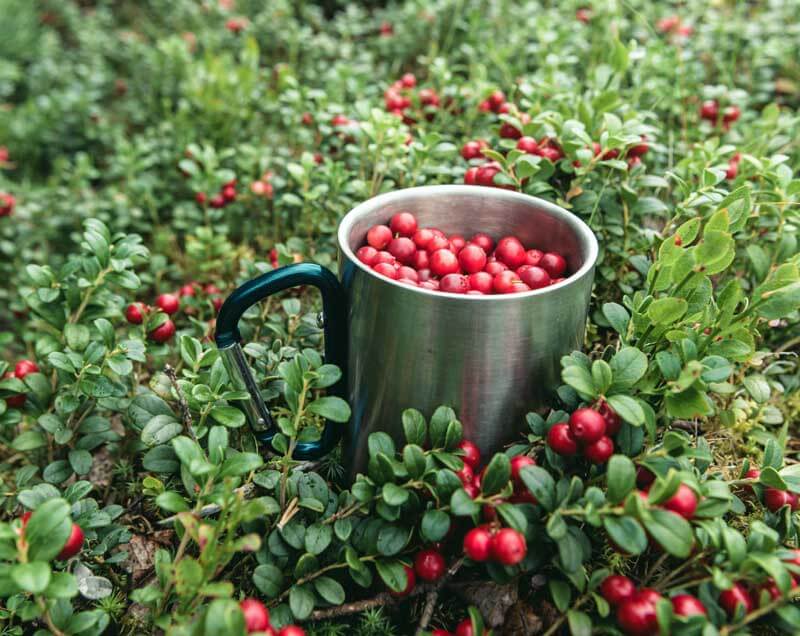
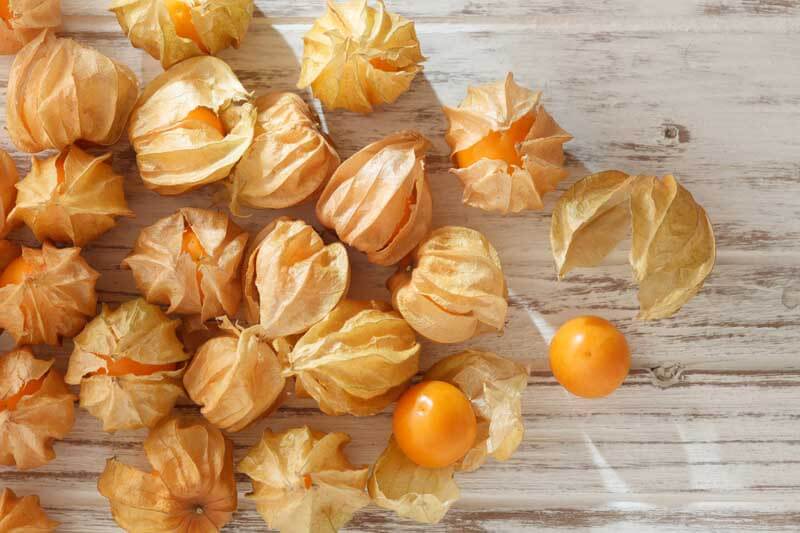
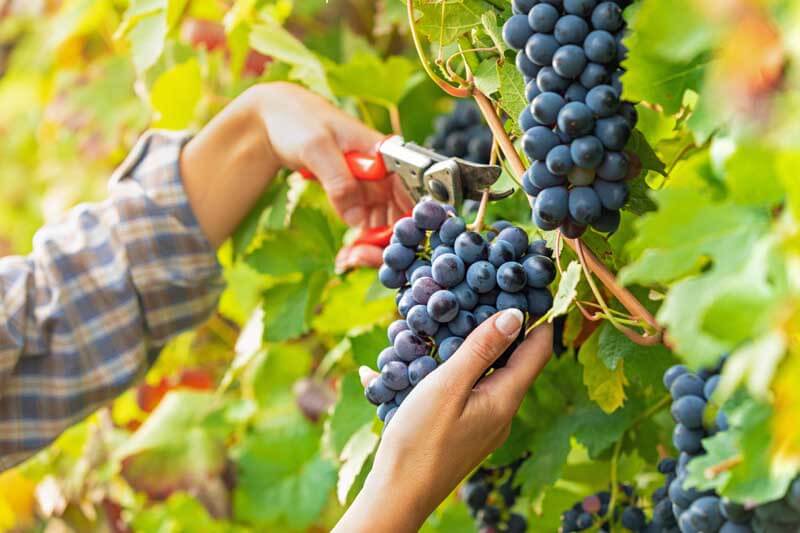

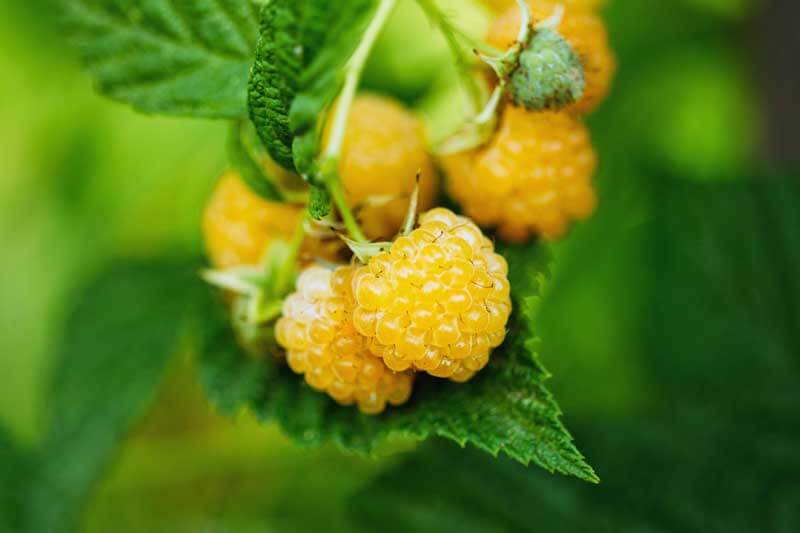
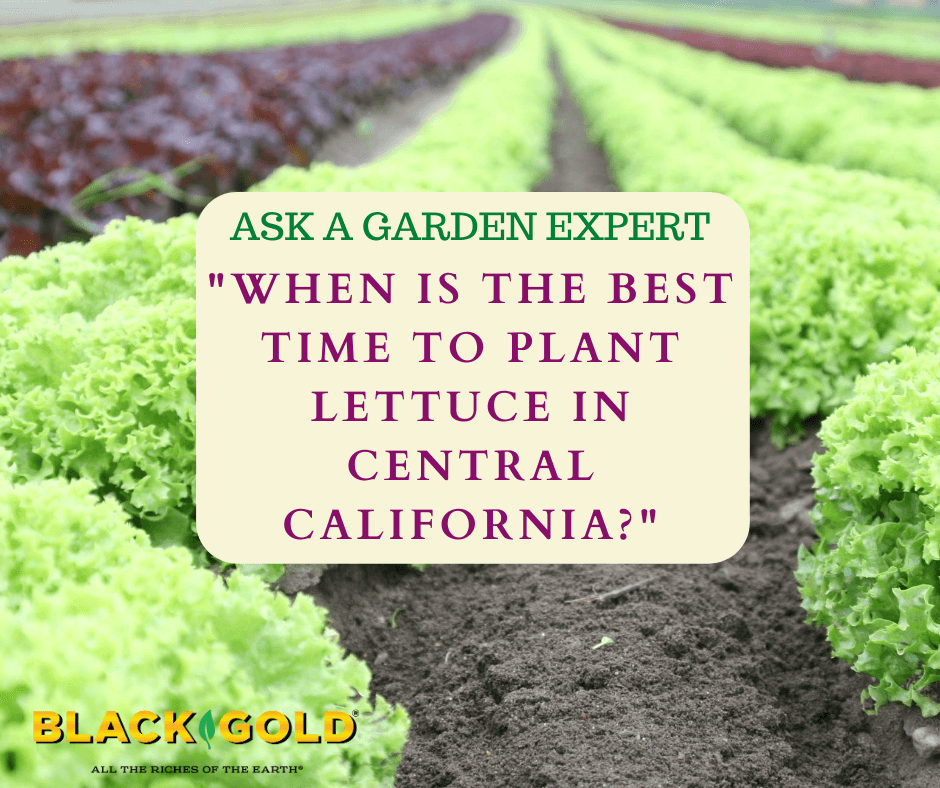
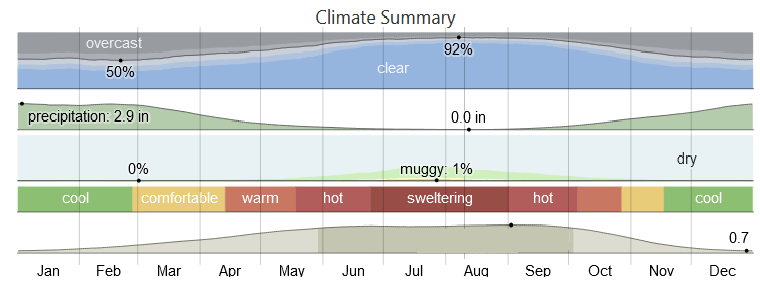


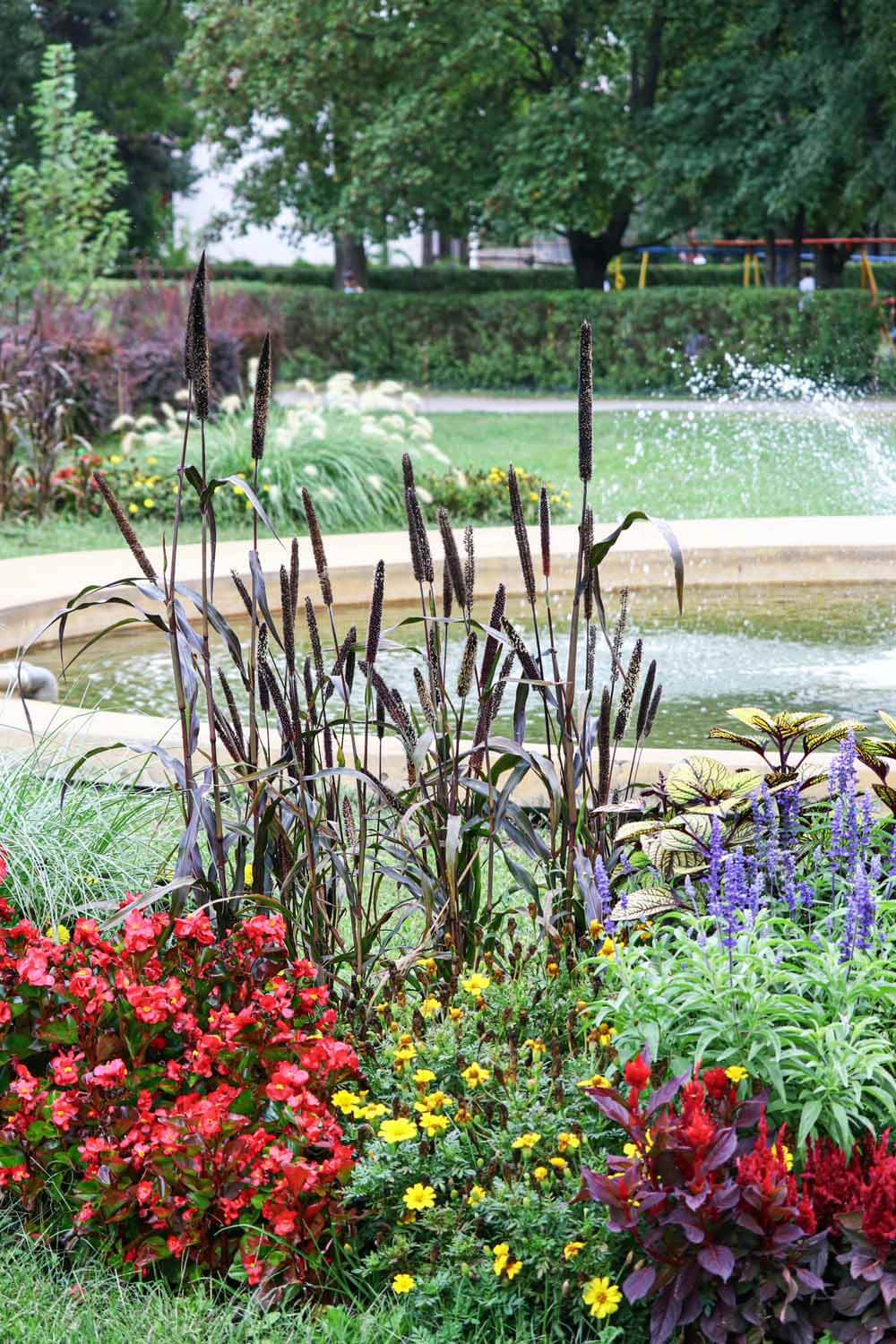




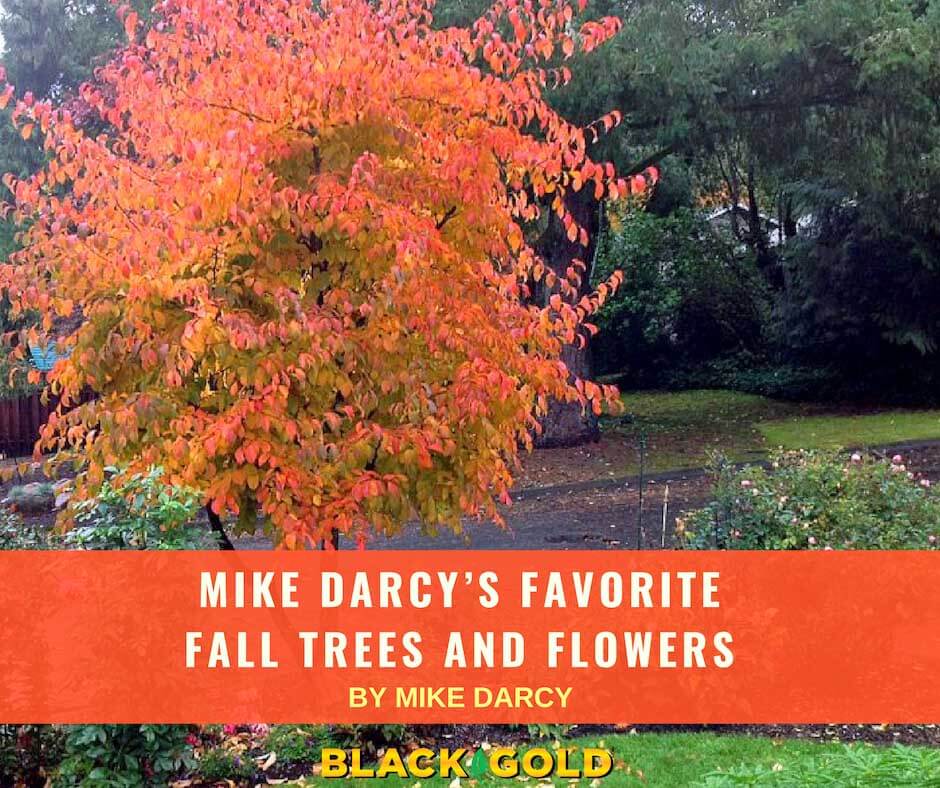
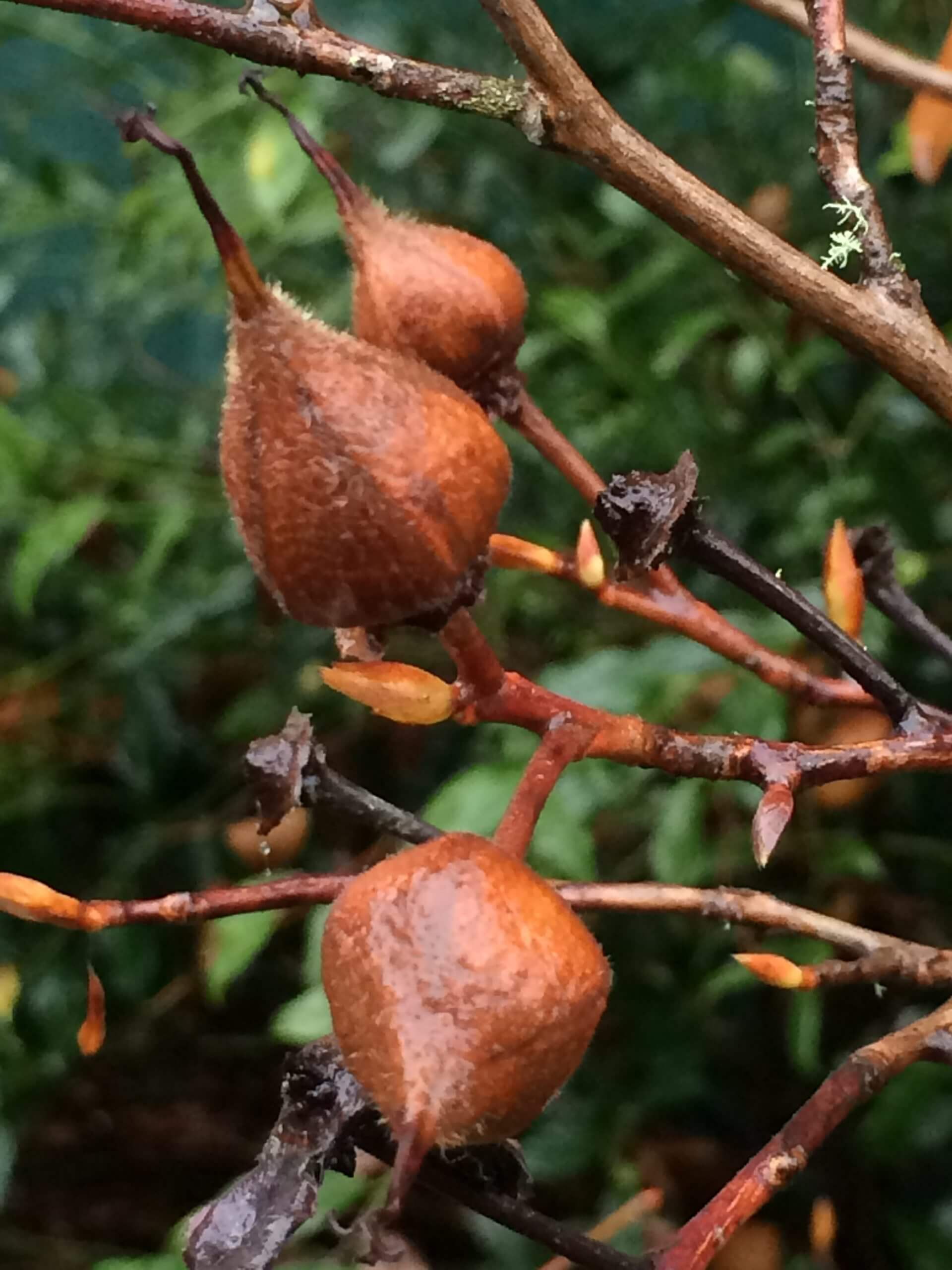
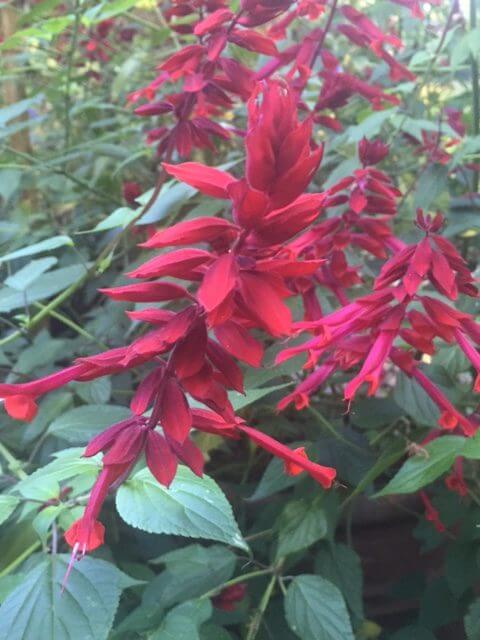
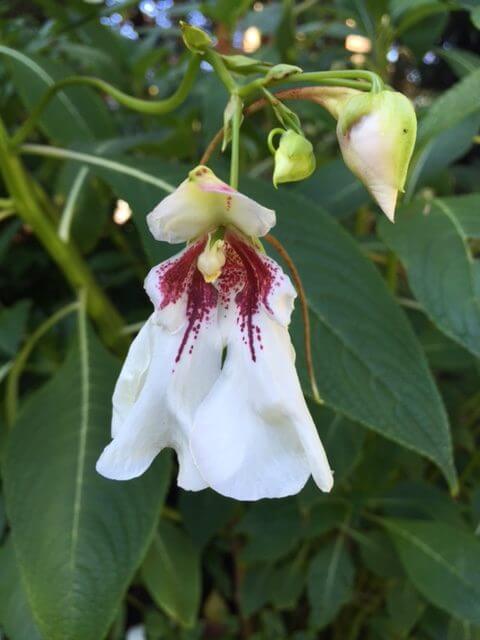

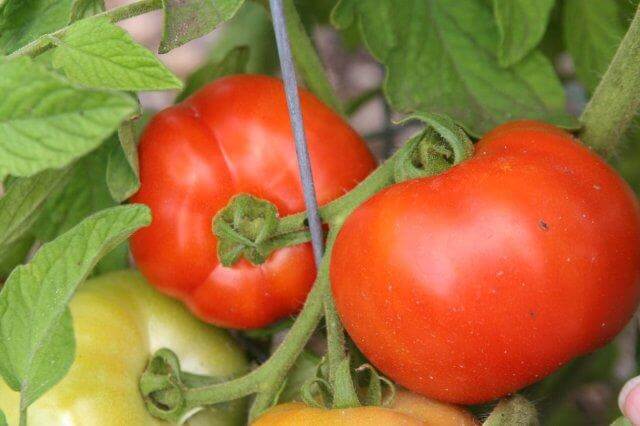


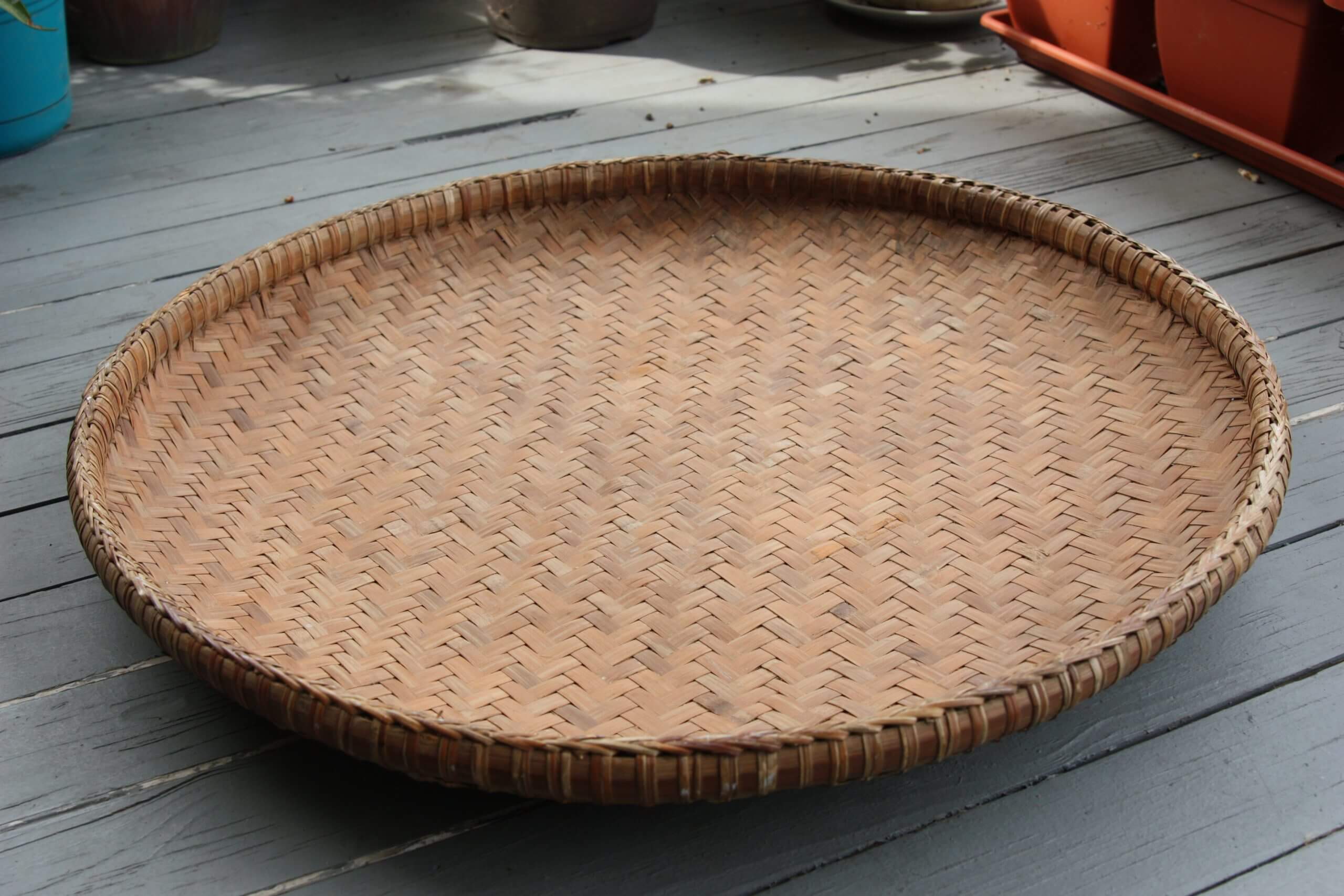
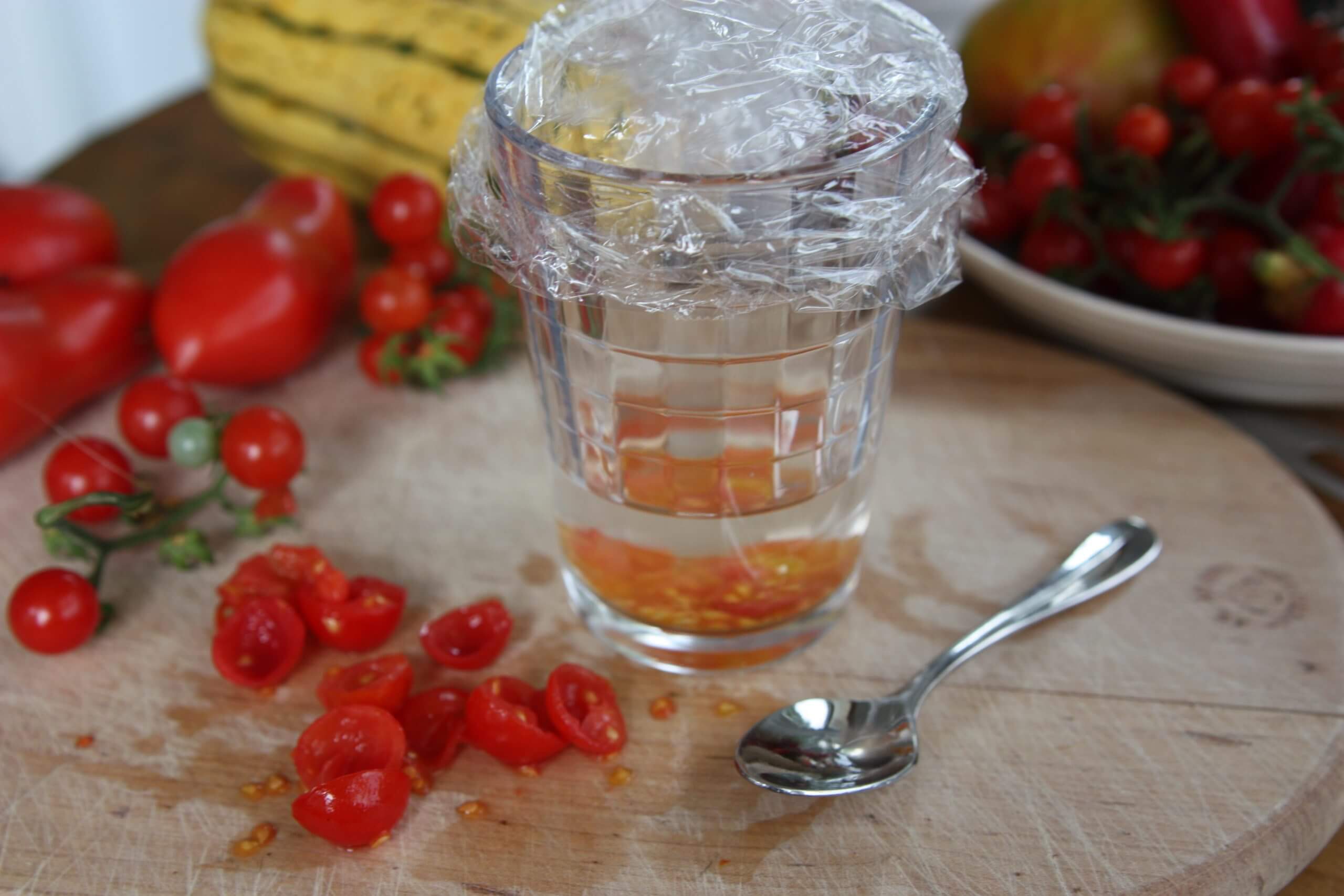
 Pumpkin, melon, and cucumber seeds can simply be scooped and cleaned in a fine colander under warm running water. Pieces of membrane may need to be picked away from the pumpkin or squash seeds. The clean seeds will be a little slippery, but that is okay. Dry the seeds on a light colored towel before packaging.
Pumpkin, melon, and cucumber seeds can simply be scooped and cleaned in a fine colander under warm running water. Pieces of membrane may need to be picked away from the pumpkin or squash seeds. The clean seeds will be a little slippery, but that is okay. Dry the seeds on a light colored towel before packaging.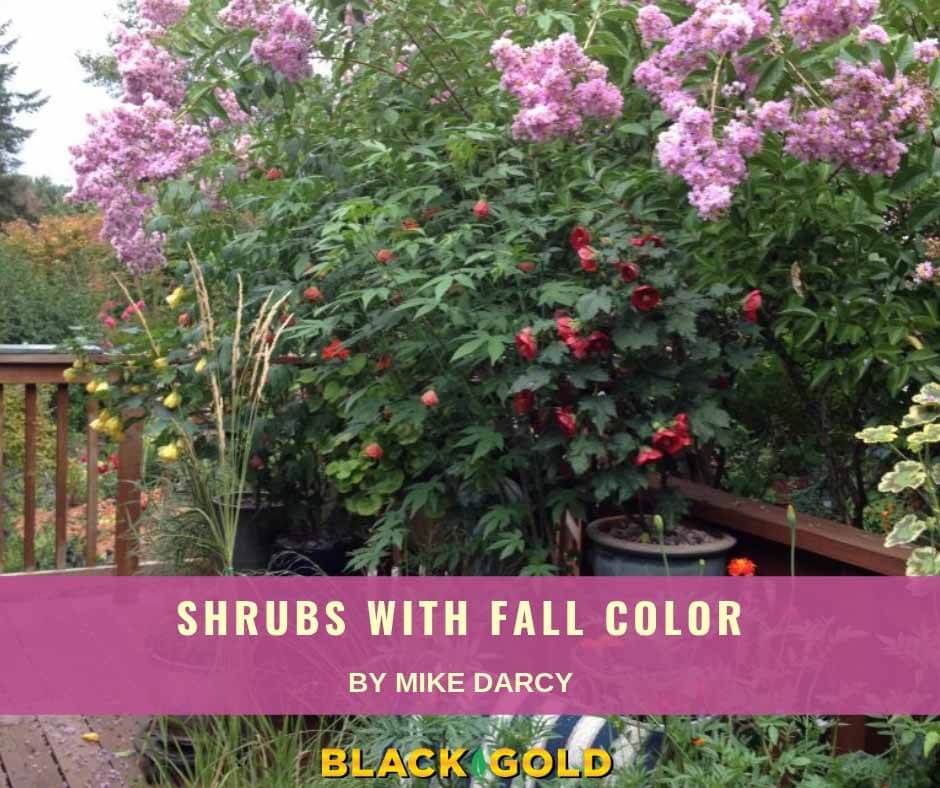
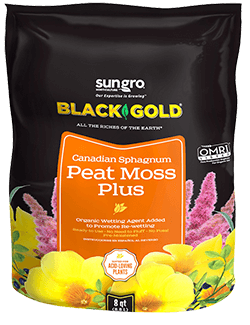 anticipation for gardeners. We often visit our local garden centers to see what is new, in bloom, and what we must have. In the fall season, however, gardeners are less apt to visit garden centers or other gardens. As a result, many late-blooming trees and shrubs are overlooked when there are so many trees and shrubs with fall color to consider.
anticipation for gardeners. We often visit our local garden centers to see what is new, in bloom, and what we must have. In the fall season, however, gardeners are less apt to visit garden centers or other gardens. As a result, many late-blooming trees and shrubs are overlooked when there are so many trees and shrubs with fall color to consider.